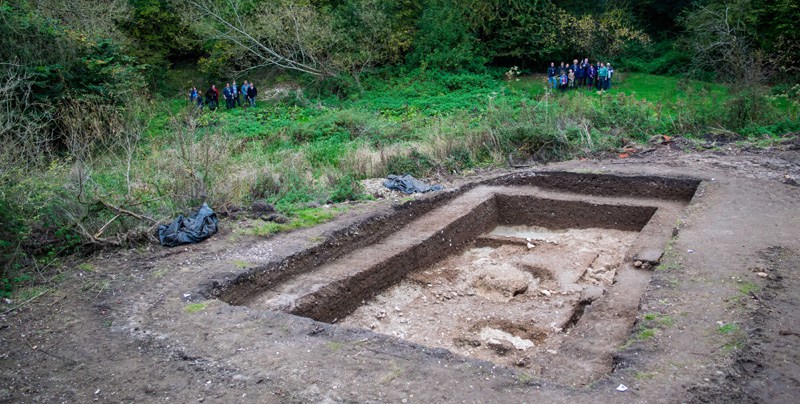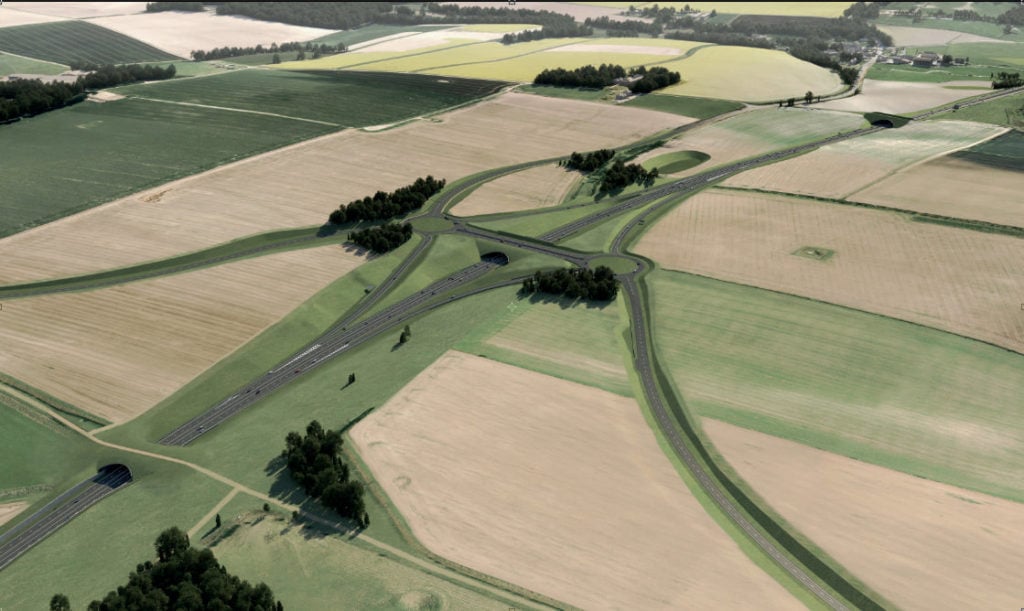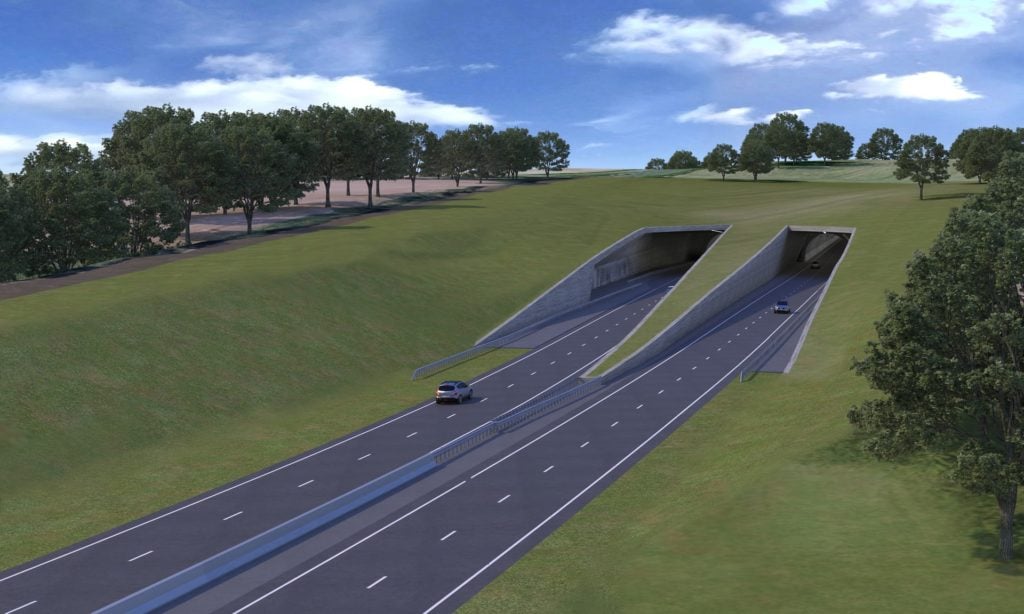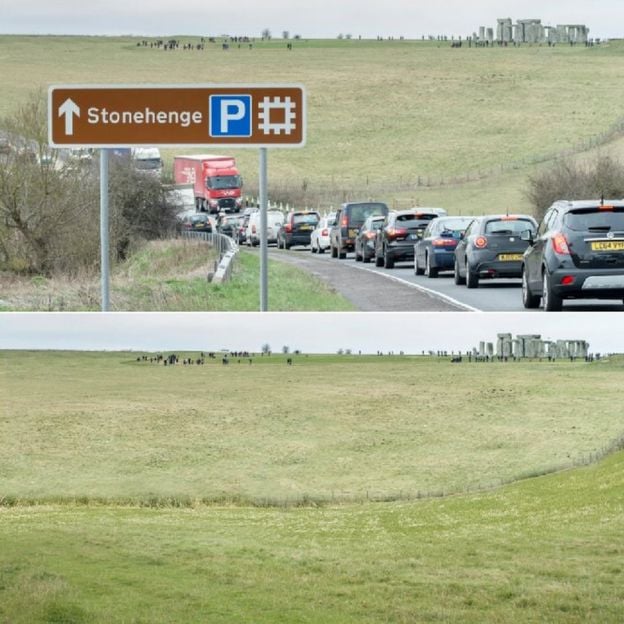Art World
The UK Wants to Build an Underground Highway Near Stonehenge. Archeologists Say, Hmm, Let’s Not, Shall We?
Critics say that digging the tunnel road could destabilize the ancient monument's massive stone slabs.
Critics say that digging the tunnel road could destabilize the ancient monument's massive stone slabs.
Sarah Cascone

Archaeologists are up in arms over plans to dig a 1.8-mile-long underground highway near Stonehenge, the ancient circle of monumental stone slabs built between 5000 BC and 2000 BC on the UK’s Salisbury Plain.
Opponents of the planned tunnel road, which is expected to cost £1.6 billion ($2 billion), argue that undertaking major construction near one of the world’s best-known World Heritage sites could set a dangerous precedent for other historic monuments around the world and potentially damage the site itself.
“We’re right on the cliff edge here of losing a valuable site,” David Jacques, a University of Buckingham archaeologist, told Courthouse News. “Stonehenge isn’t just about the stones; it’s about the whole landscape. We can’t mess around with that landscape; it won’t come back.”

Excavations at Blick Mead, near Stonehenge. Photo courtesy of the University of Buckingham.
Stonehenge is surrounded by burial mounds and other prehistoric artifacts, such as the nearby Blick Mead site, where Jacques is head of ongoing excavations. An initial tunnel design, since revised, was criticized in February as being too close to Blick Mead, which dates to the Mesolithic era and features the oldest-known evidence of human settlements in the UK, dating back to the end of the Ice Age around 8000 BC.
There are concerns that the large-scale excavation necessary to build a tunnel could disturb the local water table, which has helped preserve ancient artifacts in damp peat for millennia. In April, Andy Rhind-Tutt, chairman of Amesbury Museum and Heritage Trust, told the BBC that “there has already been destruction of some of the archaeology on site whilst test holes have been dug.” (Highways England has denied this claim as “alarmist and untrue.”)

Stonehenge in Wiltshire, England is the most architecturally sophisticated prehistoric stone circle in the world. Photo courtesy of Wikimedia Commons.
In addition to potentially damaging objects that are still buried, the extensive roadwork could even destabilize the surrounding ground, causing Stonehenge’s massive, 25-ton stones to shift, sink, or even fall over.
The mysterious stone circle was named a World Heritage site by UNESCO in 1986. The international agreement to protect historic monuments such as Stonehenge, created at the 1972 UNESCO World Heritage Convention, it not legally binding.
The proposal for the tunnel road has been in the works since 2014. It was undertaken partly in response to local residents who complained about dealing with tourist traffic on the current two-lane highway. The tunnel would feature four lanes in order to ease congestion and a green roof to help it blend into the surrounding landscape.

A rendering of the Stonehenge landscape after the proposed tunnel is built. Image courtesy of Highways England.
In July, the World Heritage Committee issued a decision against the current tunnel road proposal, which it said would “impact adversely on integrity and the Outstanding Universal Value (OUV) of the property.” Though the committee allowed that the current plan “shows improvement compared with previous plans,” it recommended additional revisions, such as a much longer tunnel with entrances further from Stonehenge, before moving forward with the project.
“These upgrades in the southwest will improve millions of journeys,” Highways England’s chief executive Jim O’Sullivan told the New York Times in February. “Highways England [is] delivering major infrastructure upgrades for the whole country.”

A rendering of the proposed Stonehenge tunnel. Image courtesy of Highways England.
The plan eliminates existing roadside views of Stonehenge from A303, presumably relieving rubbernecking from motorists slowing to take a good look at the monument. This could also benefit visitors to Stonehenge, giving them the opportunity to “appreciate the monuments and see and hear wildlife without the intrusion of the traffic and noise,” and walk freely across the ancient landscape, argued Historic England, the National Trust, and English Heritage in a joint statement.
On the flip side, critics claim that these groups are hoping to boost admission revenue at Stonehenge by forcing people to pay to come in, rather than just seeing the monument from the road. (English Heritage, formerly a public organization, will no longer receive government funding after 2023.)

A photo of Stonehenge and the current A303 highway, and a rendering of the view of the site once the proposed tunnel is built. Image courtesy of Highways England.
For the past four weeks, the public has been invited to weigh in on the revised plans for the tunnel. The review period for this supplementary consultation ends today, and the government is expected to move forward with the project.
A preliminary schedule calls for construction to begin in 2021 and to be completed by 2025. Between now and then, the plan is almost certain to face legal challenges from opponents.